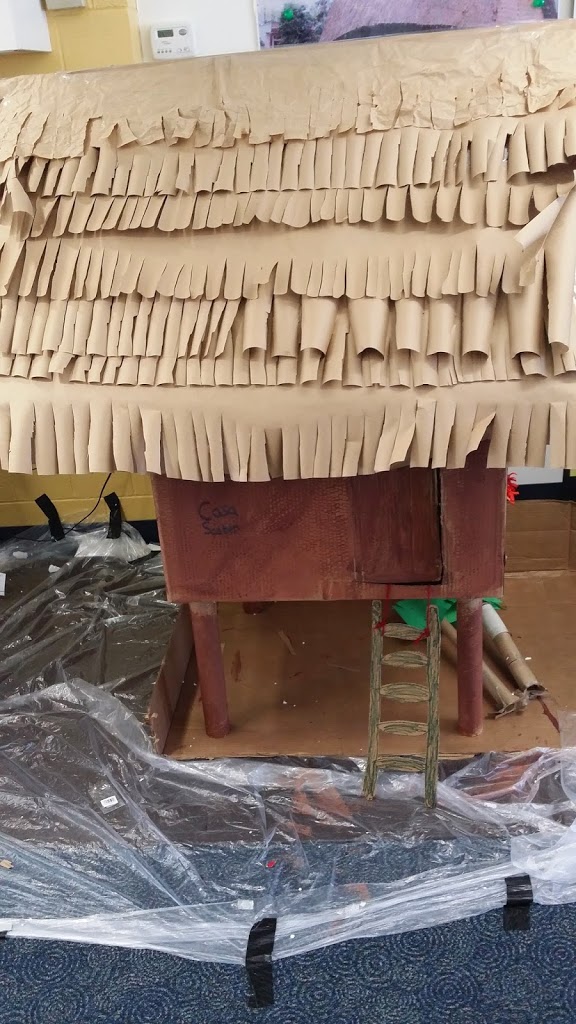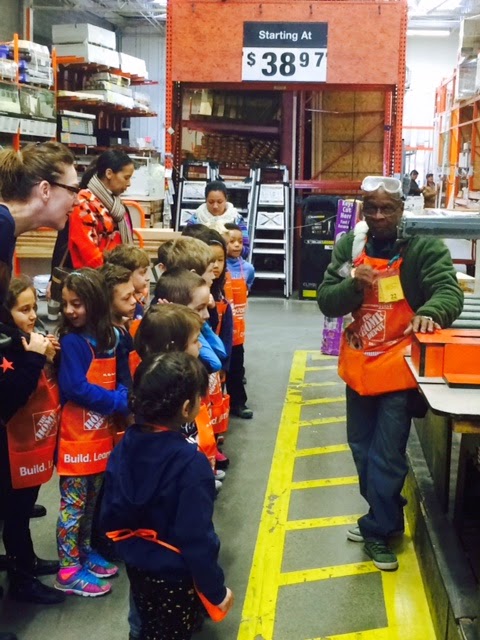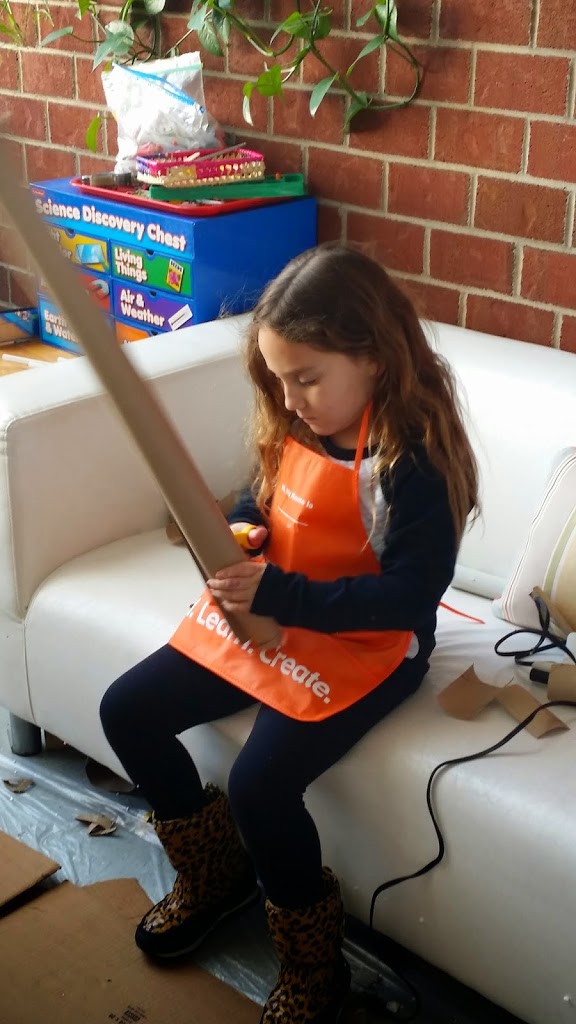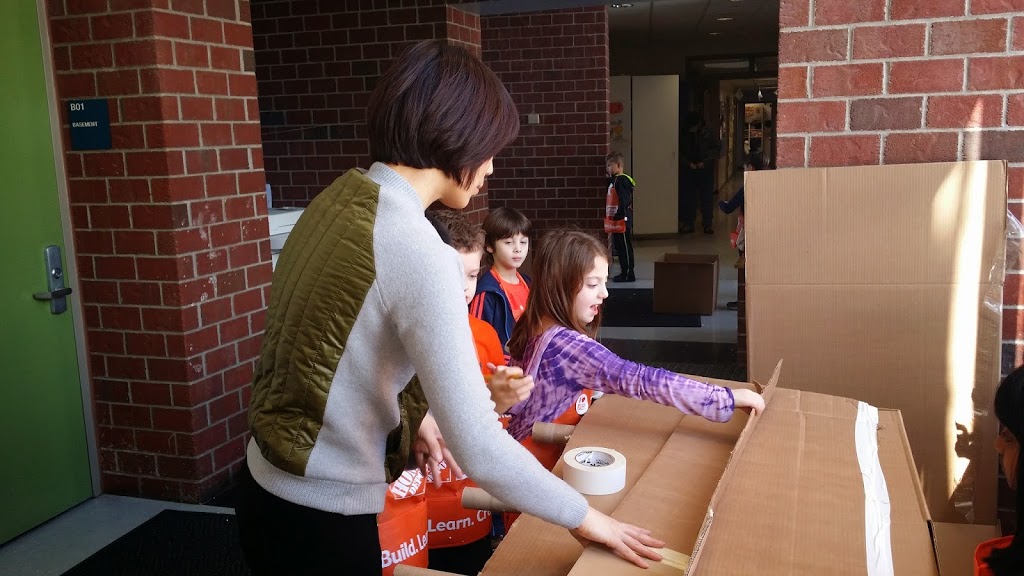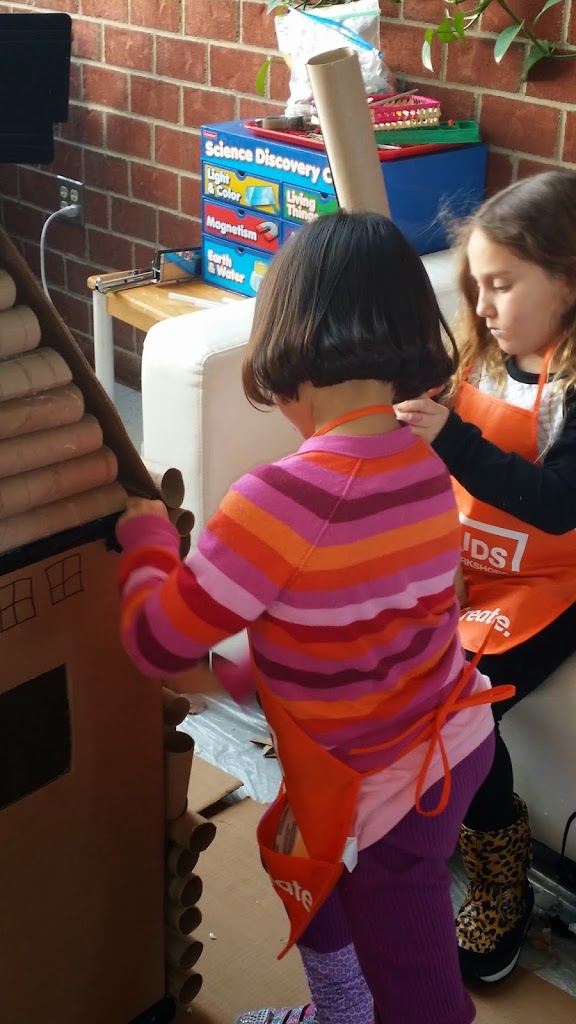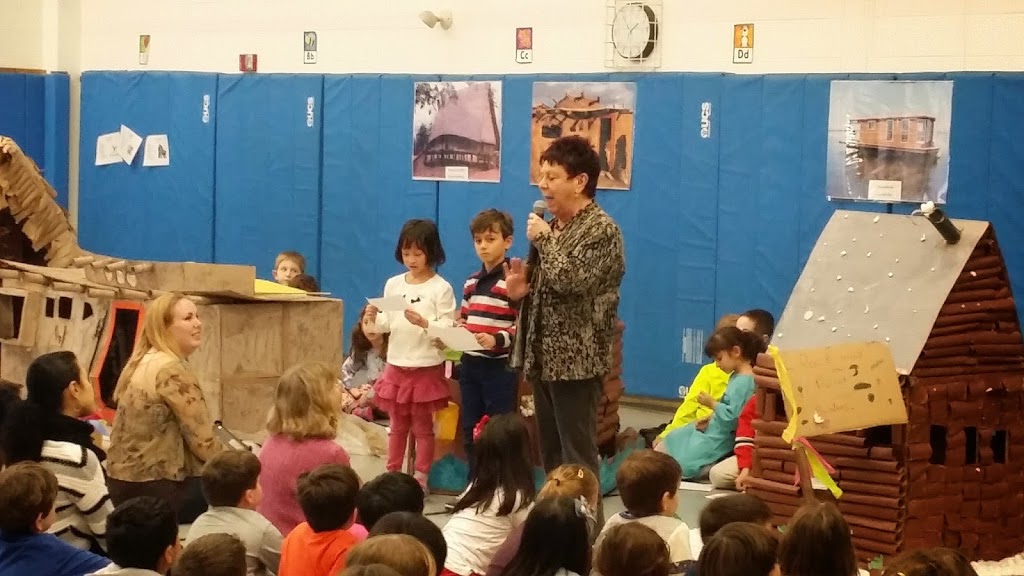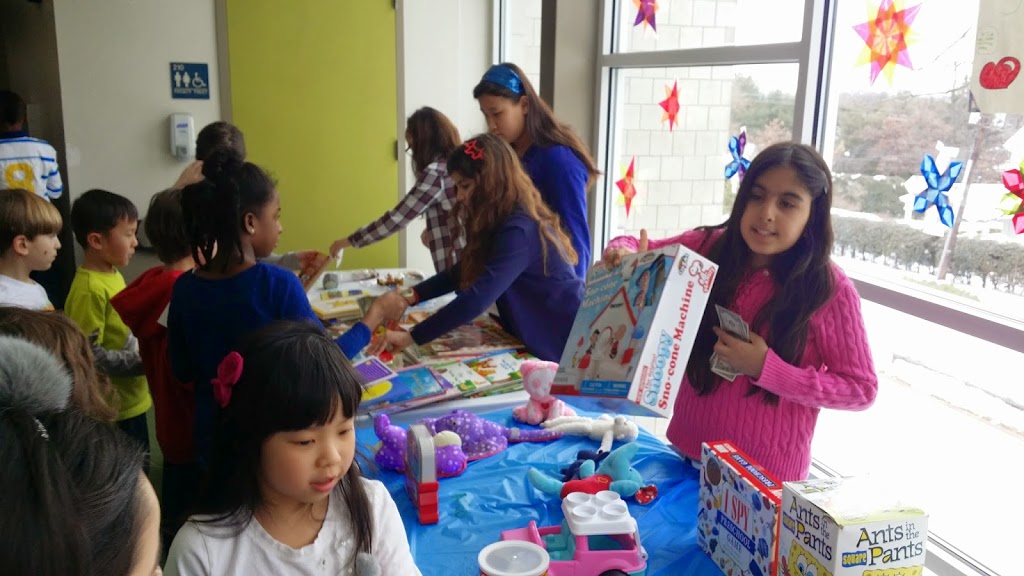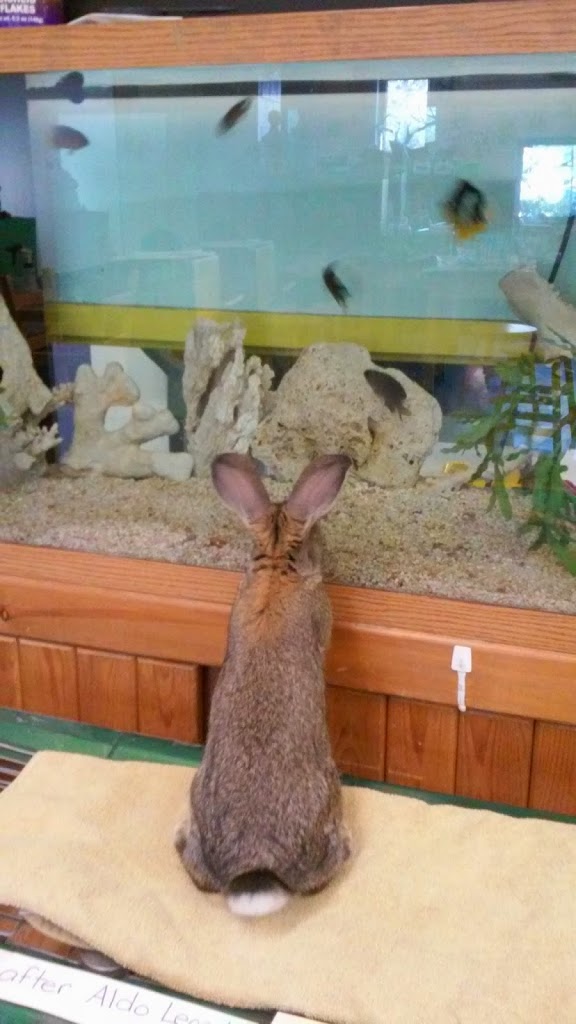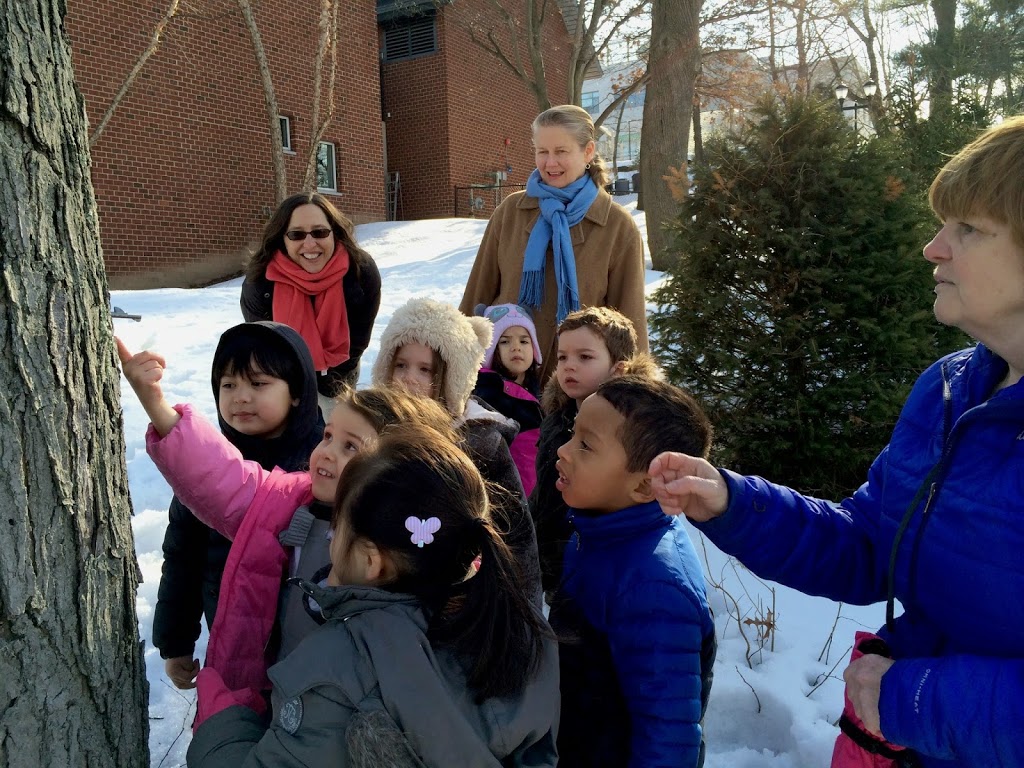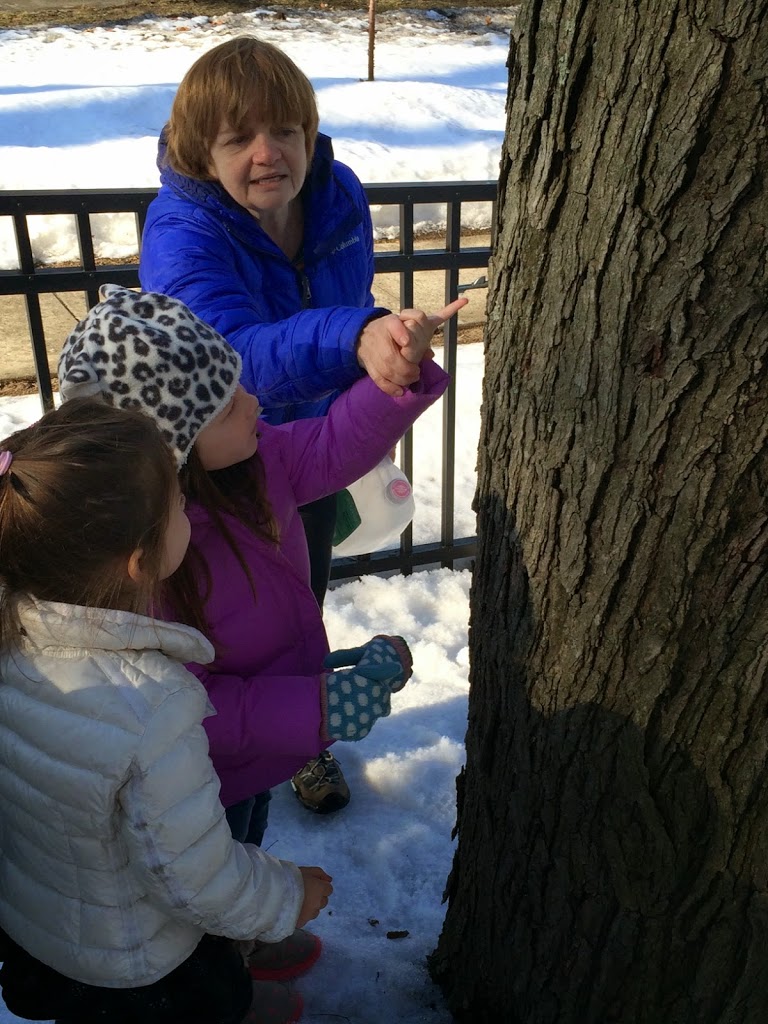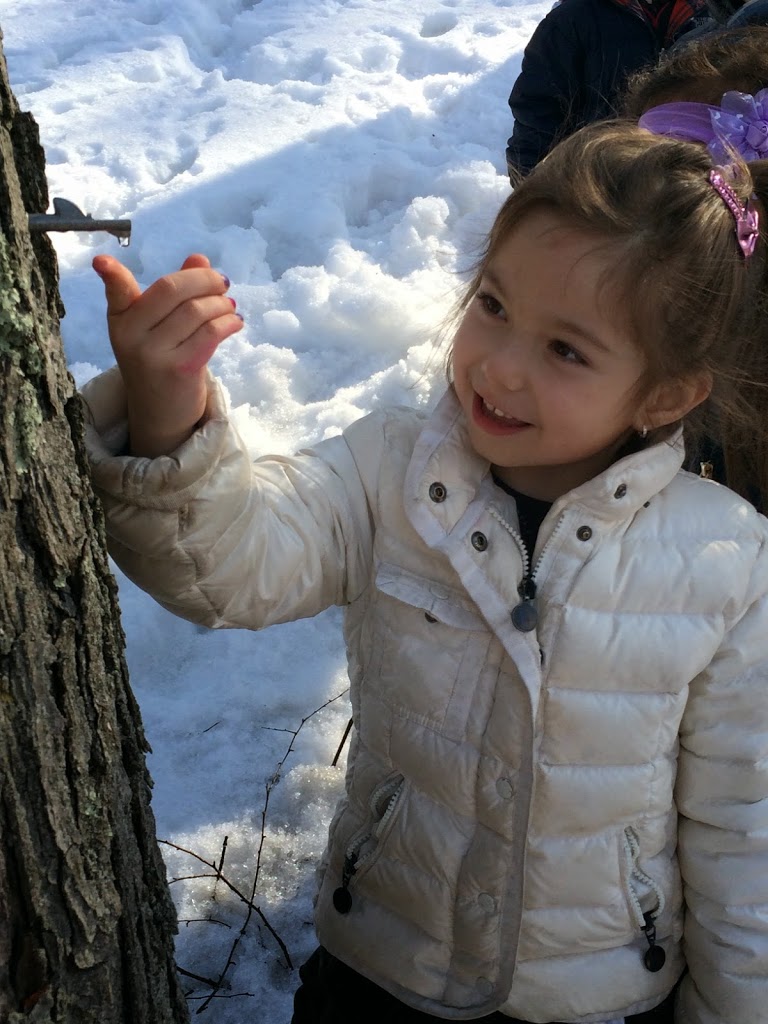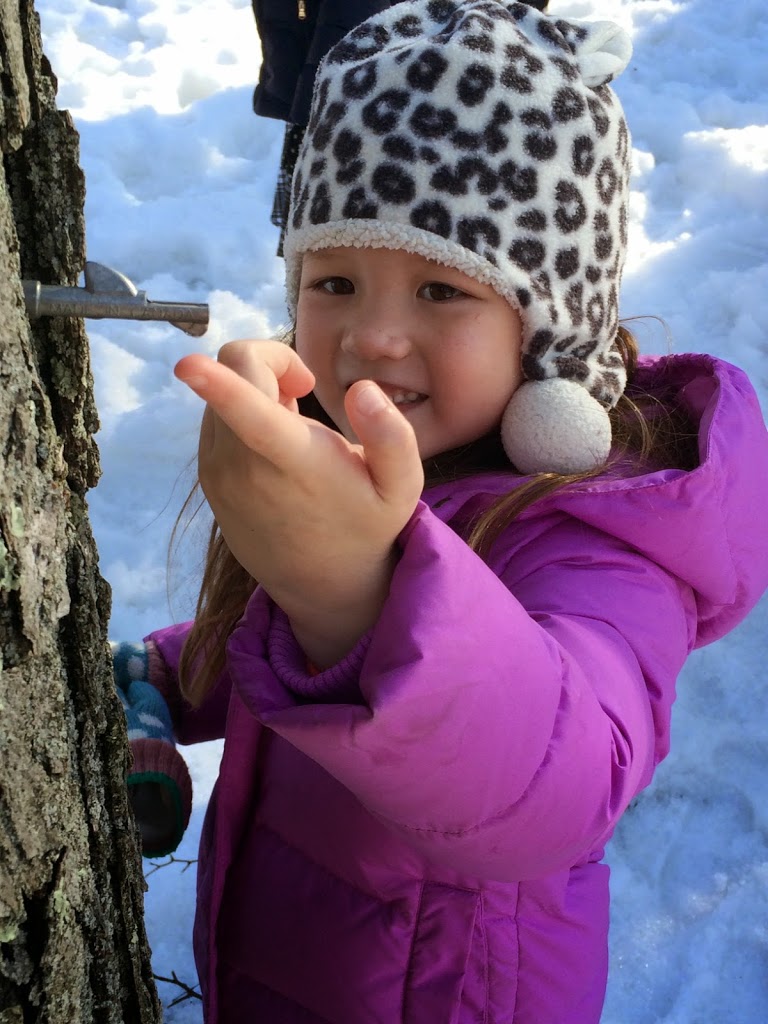Houses & Homes Unit
Submitted by Madison Farrar, First Grade Teacher
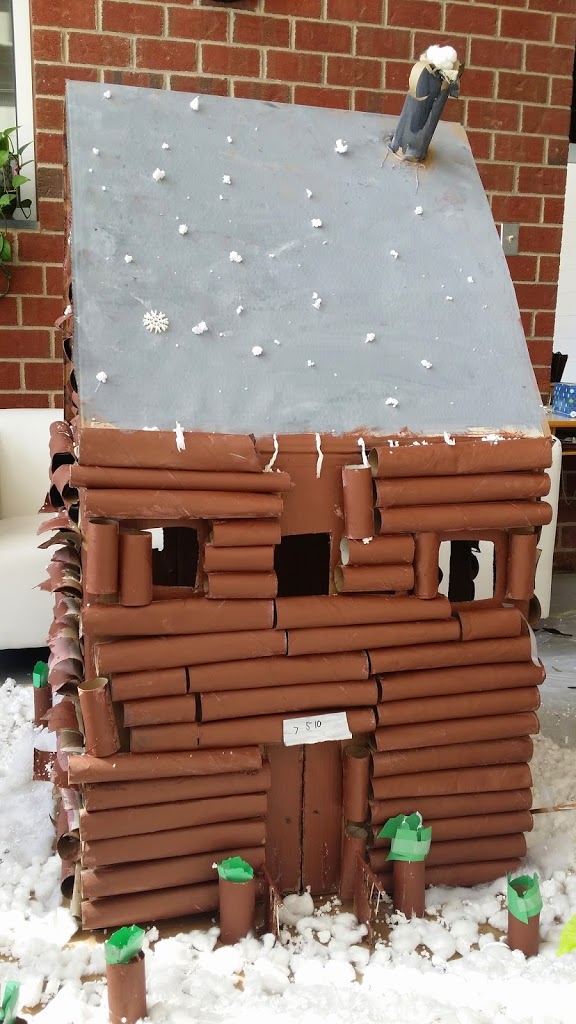 The first grade “Houses and Homes” unit is built on the essential question, “What is shelter?” We also discuss that no matter where people live in the world, shelter is a basic need.
The first grade “Houses and Homes” unit is built on the essential question, “What is shelter?” We also discuss that no matter where people live in the world, shelter is a basic need.
The 3 C’s: collaboration, cooperation, and compromise, are also important elements in this unit. The outline below chronicles the major components of this integrated unit.
1. We begin by learning about the 7 continents and how some homes are unique to particular regions of the world.
2. The children are then divided into 6 construction companies representing the 6 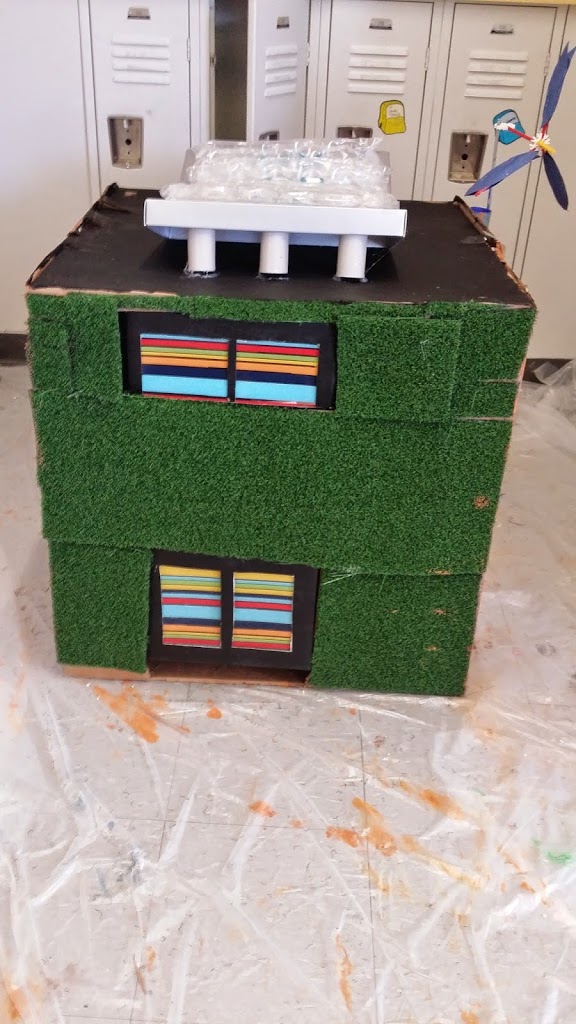 continents that are inhabited. They also learn that Antartica is a bit too cold for human inhabitants. The children then decide which type of home their team will build.
continents that are inhabited. They also learn that Antartica is a bit too cold for human inhabitants. The children then decide which type of home their team will build.
3. The next step is to sketch design ideas, research the materials needed and begin to work as a team on building the model home that represents that continent.
4. During the entire unit, we encourage parents that are in the construction, architecture and design field to come in to speak to the children directly about their field. We also encourage parents to be a part of the actual building process that takes place toward the end of the unit.
5. Following this preliminary research, we take a trip to a local Home Depot store in order for the children to get a sense of design and construction materials used in home design and construction. They are also able to design and build a small structure while in the Home Depot store.
6. The unit integrates social studies, mathematics, reading and writing. The children learn about the differences in shelter around the world. They also learn about ways in which climate and economics effect how and where homes are built. We explore geography by learning about the 7 continents and the world’s oceans. The children do extensive research on the home they will create and then produce a step-by-step book on the process of creating the model home.
7. The building process is a hallmark of this unit. It gives the children an opportunity to become very hands on with what they have learned and to actively incorporate the 3 C’s – collaboration, cooperation and compromise. Throughout the building process, they also realize that another important “C” – communication- is very important in working as a team.
8. The finished models are on display prior to presenting to the entire Lower School, parents and invited guests, during an assembly. The children sing a song that has been adapted specifically for this unit. They then present their model home and share some “fun facts”. Finally, they field questions and comments from the captivated audience!
A Multi-Tiered Approach to Giving:
Submitted by Jessica Pomeroy, 5th grade teacher and Emma, 5th grade student
Prior to spring break, a group of fifth grade students held a sale of gently used toys and books. Their main goal was to raise funds for St. Jude’s Children Research Hospital, but they were also able to encourage their classmates to clean up their rooms and toy boxes, while also recycling toys and books in good condition to younger students in the school – a multi-tiered approach to community involvement.
To prepare for the sale, the students, Emma, Diya, Hyeri, Sunaya, Naz, Nehir and Sophia, asked fifth grade students to bring in their donations. The aforementioned students worked during their recess periods to organize and price the items. They realized that most of the items would appeal to younger students so they decided that it would be best to open the sale for students in kindergarten, first and second grades. They created and distributed flyers to those grade levels and stayed after school one afternoon to set up the sale tables.
The fundraiser was a huge success! Through perseverance, collaboration and a great deal of hard work, the students raised over $500 for St. Jude Children’s Research Hospital. Overall, it was a great process for the students to think of a way to give to various communities and to see the process through to the end. Rightly so, they felt proud of themselves for helping others, and it was a pleasure working with them on this charitable venture. Please read the reflection below that was submitted by Emma. The fundraiser was an idea that grew from her kind heart.
From Emma:
“My idea for the fundraiser for St. Jude Children’s Research Hospital started around Christmas time. I told my dad that I wanted to get everyone in my grade a present for Christmas. My dad told me that we all have so much and encouraged me to think about children that don’t have as much as we do. He mentioned the children at St. Jude. I read more about the hospital and an idea came to me. Why don’t we sell gently used toys and books as a fundraiser for the children as St. Jude? I pitched my full idea to Ms. Lewis and the members of the Upper School fundraising committee and the idea was approved!”
“I asked some of my friends, Diya, Hyeri, Sunaya, Naz Nehir, and Sohia to help out, and we started planning. Items were donated, and we organized and priced them. The day of the sale, I was really excited and nervous. It went great! We earned over $500.00 for St. Jude! During the process I learned how to work with a group and how to keep organized. Overall, it was a great experience, and I am glad that we were able to help out!”
Spotlight on Special Area Classes:
The stories below provide a window into some of the activities that have been going on in some of the special area classes this past month.
Physical Education: Jump Rope for Heart!
The Lower School has just participated in its second Jump Rope for Heart and Hoops for Heart Fundraiser, spearheaded by 5th grader Eila, with coordinating support from other 5th graders Leah, Anton and Brianna.
This is a nation-wide event where students use the skills learned in our fitness and basketball unit We learn about the heart and how to keep it healthy, while making a difference for our community. All proceeds were donated to the American Heart Association.
Art: 4th Grade Sculpture
The 4th grade Sculpture Show is an adaptation of the traditional annual 4th grade Sculpture Garden Show that is usually displayed outdoors on the D-E campus. Each year 4th grade students participate in the process of designing, model making, and construction of a large-scale abstract sculpture. The project is celebrated with a student run exhibit each year.
This year we decided to take advantage of an opening slot for the Swartley Gallery and displayed the large-scale sculptures indoors, instead of outdoors, due to the inclement weather. Each child independently developed multiple designs, combining traditional geometric flat and three-dimensional shapes to be constructed out of cardboard. Some drew their inspiration from inward forces, others from external influences. The children labored over design formats and created paper models, practicing the compositions and orientations of all of the individual shapes that they generated. Mid-project, each student selected one design from which to construct a final large-scale abstract sculpture. The materials for their sculpture included recycled cardboard, masking tape, hot glue and latex paint.
During the design phase, each child developed a personal syntax of abstract language, allowing them to express their visual thoughts. The model-making phase included skills such as line drawing to scale in architectural form. The 4th graders created many opportunities to share their work with each other through peer conversations and small critique groups. This afforded them the opportunity to incorporate feedback into the design and model-making phase.
 The large-scale construction phase is quite an undertaking as each student is provided with a set of parameters to which he or she must adhere in order to create an original sculpture. Though the parameters were few, they each yielded very unique works of art. Each child rose to meet specific challenges of construction, building with limited material, while still maintaining a unification and harmony of design and craft.
The large-scale construction phase is quite an undertaking as each student is provided with a set of parameters to which he or she must adhere in order to create an original sculpture. Though the parameters were few, they each yielded very unique works of art. Each child rose to meet specific challenges of construction, building with limited material, while still maintaining a unification and harmony of design and craft.
Each sculpture was honored and celebrated for one week in the Swartley Gallery. The students in kindergarten through 3rd grade visited the show while studying the artwork of their peers. The children’s hand-written notes included sketches of the 4th grade sculptures as well as provided positive feedback for each individual artist.
This particular project is one of our longest and largest undertakings during the 4th grade school year. Each 4th grade student designed and built an authentic sculpture from their imagination, which is a grand task that each 4th grade student is proud to have produced.
Science:
“Leo!”
Aldo R. Leopold, our new rabbit, is named after two important people. Aldo Leopold, a conservationist and Leonardo DaVinci, inventor and artist extraordinaire! The children have decided to call her “Leo” for short. Our Leo also has the middle name Rudolph after the grandfather of one of the Lower School children.
Leo is a Flemish Giant. That means she is predicted to weigh at least 9 pounds when full grown! Be on the lookout for her!
Tree Tapping: It’s Time to Tap our Trees!
Each spring we tap the maple trees on campus to teach the children where that yummy syrup really comes from. They help drill the hole, and then they tap the spiel into place. Next they hang a bucket or container to catch the sap. One of the parts they like the best is catching sap on their fingers and tasting the lightly sweet flavor. Older students compare this maple syrup to artificial maple “flavored” syrup by becoming aware of the ingredients on a variety of maple syrup brands. All the children marvel at the fact that something that we pass each day, a maple tree, can provide such a treat!

